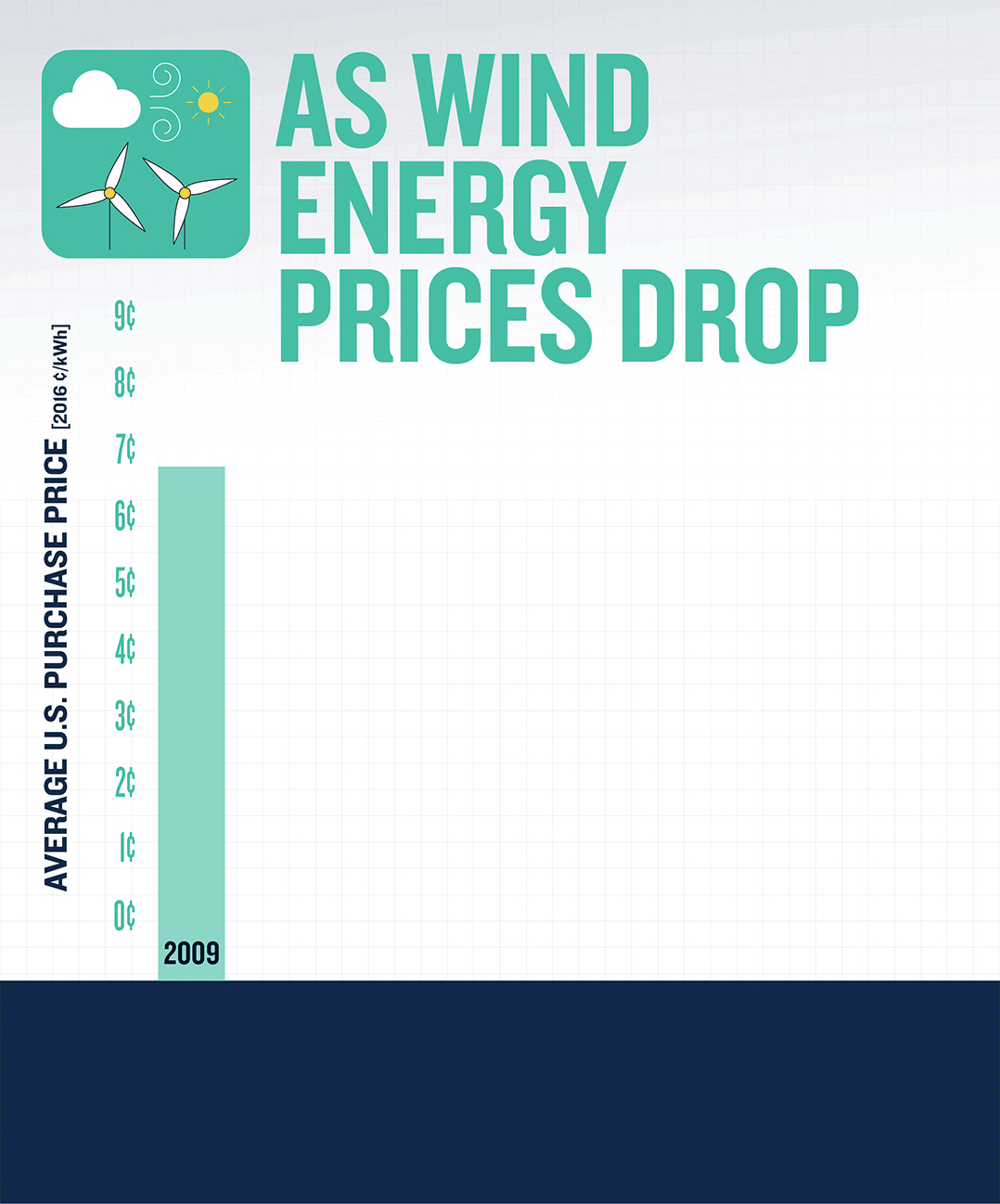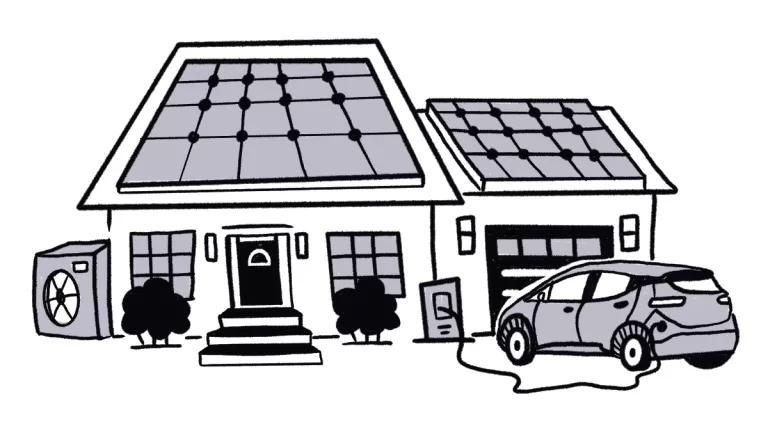NRDC’s “Revolution Now” Showcases Hopeful Clean Energy Story

NRDC launched a tool today to showcase the incredible success of four major clean energy technologies, illustrating the latest cost and adoption data for wind energy, solar power, LED lighting, and electric vehicles. “Revolution Now” replaces a similarly named report abandoned by the U.S. Department of Energy under the Trump administration.
The data tell the compelling story of cleaner, cheaper, and higher-performing energy systems—all the result of technology breakthroughs brought about by the nation’s top innovators with the help of federal investment in research and development (R&D). It’s a hopeful and forward-looking story of the benefits we can see—to our health, planet, and pocketbooks—if our federal government continues to invest in clean energy.
But it’s also a story whose next chapter depends on the decisions federal leaders make now: whether they choose to fund innovation programs, set science-based air quality standards, and reward cleaner technologies, or instead take their foot off the accelerator and allow the nation’s clean energy engine to sputter.
You’d think the government would want to crow about these breakthrough successes—as the DOE did in its Revolution Now reports published from 2013 through 2016. But the Energy Department stopped producing them last year, fitting into the Trump administration’s effort to hide the success of clean energy technologies and suppress their growth.
NRDC’s Revolution Now website compiles available data into graphs that illustrate dramatic declines in cost and increases in implementation of the four major clean energy technologies. While the numbers are public, they are buried in long reports published by the national labs and industry groups—so we decided to bring the most recent data and trends to light to share the clean energy success story with more people.
Technology breakthroughs pave the way for a clean energy future
Revolution Now paints an encouraging clean energy picture. Wind energy can now power more than 25 million U.S. homes. Solar energy has morphed from a novelty item to a first-class energy resource in the span of a decade, now with the capacity to power more than 9 million U.S. homes. LED (light-emitting diode) light bulbs—which use 75 to 80 percent less energy than their old, incandescent counterparts—have spread rapidly, with 400 million bulbs installed throughout the U.S. as of 2016. And more than 800,000 electric vehicles (EVs) have hit the road, with 25,000 EVs sold nationwide in March alone.
These technologies have left the laboratory bench and found their way into the lives of millions of Americans—powering homes and businesses, lowering electricity bills, and reducing health-damaging and climate-warming pollutants.
None of the above would be possible without the hard work and creative breakthroughs of the nation’s brightest scientists and engineers—and the robust federal funding that has supported them. The prices of the four technologies have dropped by 55 to 94 percent since 2008, thanks in large part to federal policy combined with technology improvements that heighten performance and increase efficiency.
For example, as a result of long-term research efforts at the DOE’s wind energy office, the average height of wind turbines increased by 49 percent from 1999 to 2016, allowing the turbines to be placed farther away from the ground—where wind speeds are higher—so they can capture more energy. In the same time frame, the length of turbine blades increased by 127 percent, allowing each turbine to cover more area and capture more wind. Thanks to technology advancements like these, the average wind farm produced energy 37 percent of the time in 2017, up from 28 percent in 2009. This means that wind power is cheaper and more reliable, and it also allows us to build wind farms in places where we couldn’t previously.


For the other technologies, similar breakthroughs have driven down costs. The price of EV batteries has dropped faster than many expected, and cutting-edge solar technologies—like mounting structures that track the sun throughout the day—are scaling quickly.
Revolution Next: innovation pushes clean energy to greater heights
The clean energy revolution must not stop here. Greater funding for DOE innovation programs in the annual federal budgets passed by Congress will make energy technologies cheaper and more effective, allowing them to have a positive impact on even more Americans.
But incremental cost reductions and efficiency improvements, though crucial, only tell part of the story. With the support of the DOE’s vast network of researchers and scientists, we have the potential to unlock solutions that could turn the energy sector on its head and allow us to meet our nation’s climate and energy goals. DOE innovation programs serve as catalysts to the needed and important breakthroughs that will continue to drive our economy forward and create good-paying jobs.
Given the rapid transformation in global energy systems, there is no shortage of research ideas to explore. For example, we could find new ways to access the nearly 2,000 gigawatts of largely untapped offshore wind potential along our coasts and the Great Lakes. Or develop new tools to trade the solar energy being generated from our roofs. However, this administration has abdicated U.S. leadership in a race with other economies investing and deploying clean energy solutions. Along with ignoring our tremendous progress, the administration has proposed deep cuts to clean energy programs. Lawmakers and leaders should assume the responsibility that this administration has tossed aside. We need to tell the story that clean energy is here and now and demand action so that our clean energy engine powers the future.



